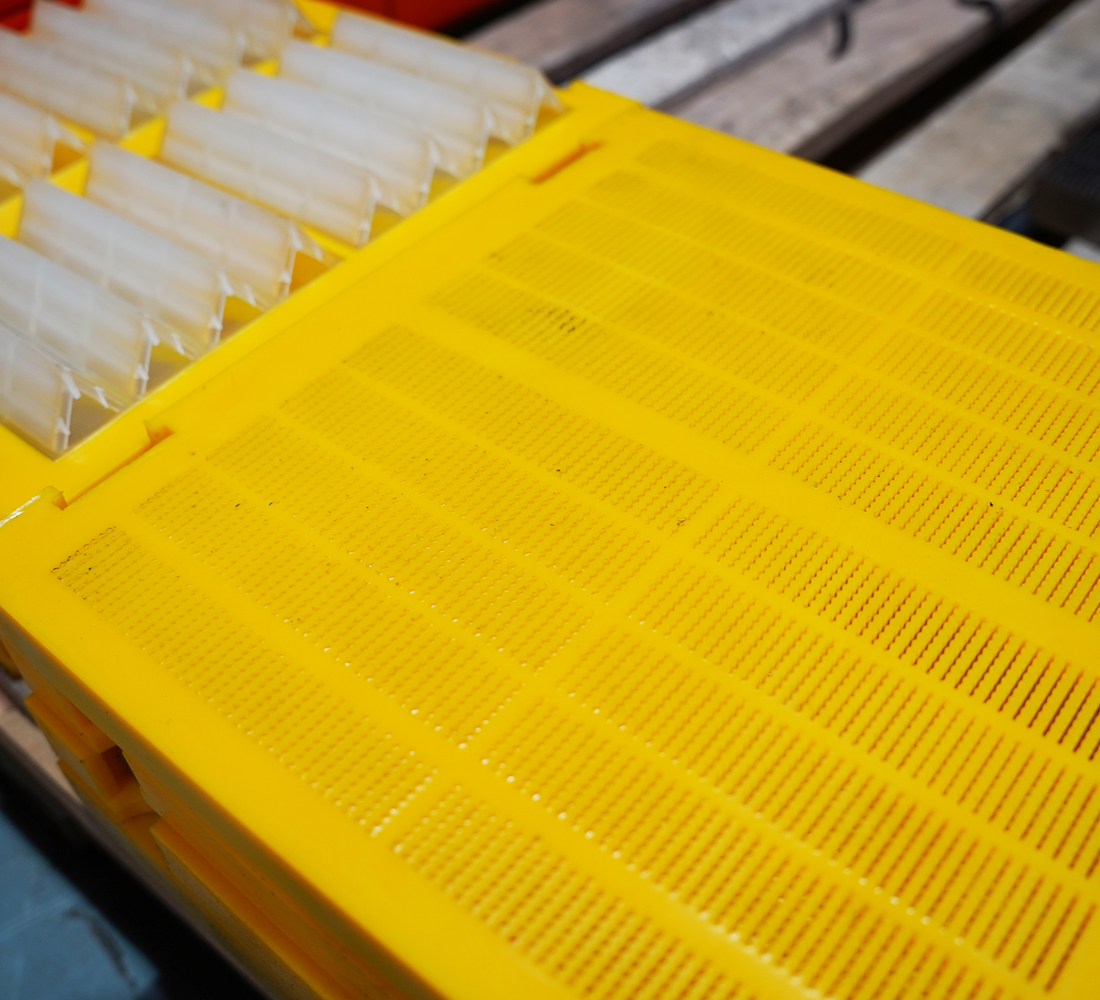The Rapid Development of Polyurethane Screens Drives the Update of Screening Media
The rapid development of polyurethane screens has gradually replaced the use of other types of screens in the screening industry
The rapid development of polyurethane screens has gradually replaced the use of other types of screens in the screening industry.
In the mining industry, screening is essential, especially for the extraction of materials such as crushed stone, gravel, and pebbles. Initially, high-manganese steel screens were used for screening these materials. However, due to the significant impact from stones, high-manganese steel screens often didn't last long, requiring frequent replacement. This resulted in high consumption of screens, which became a major issue for many customers. To address the problem of excessive consumption of manganese steel screens, many began looking for alternative screening media, and that's when polyurethane screens offered a glimmer of hope.

Though the price of polyurethane screens is considerably higher than that of manganese steel screens, customers initially purchased a batch of polyurethane screens for trial purposes, thinking it might be worth a try. To their surprise, the advantages of polyurethane screens were immediately apparent. One major benefit was that the frequency of screen replacement was significantly reduced. The extended service life of the screens indirectly brought more economic benefits to businesses. In comparison, the higher initial investment in polyurethane screens led to greater savings over time. As a result, polyurethane screens quickly gained favor among customers in the screening industry, becoming an irreplaceable product in the screening and beneficiation sector.
Polyurethane screens have a much longer service life than manganese steel screens. They are more wear-resistant and have greater impact resistance, lasting several times—or even dozens of times—longer than manganese steel screens.
The open area of polyurethane screens is 32% lower than that of manganese steel screens. While manganese steel screens are made from woven manganese steel bars, polyurethane screens are cast, which results in a lower open area compared to manganese steel screens.
In terms of weight, a polyurethane screen of the same size is lighter than a manganese steel screen. This reduces the load on vibration machinery and lowers energy consumption in screening machines, contributing to energy savings and environmental protection.
Regarding maintenance and screen replacement, polyurethane screens have a longer service life, fewer maintenance and replacement needs, and higher work efficiency. Manganese steel screens need to be replaced every 3-4 months, requiring more frequent maintenance.
As seen above, both types of screens have their advantages. When considering service life and weight, polyurethane screens are a great choice. However, for finer particle screening or when a higher open area is needed, manganese steel screens hold an advantage. Therefore, it's important not to blindly choose a screen. Select the one that suits your specific needs to maximize economic benefits!



